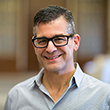Building Financial Capability and Balance Sheets Early in Life
Parents know quite well that early investments in life pay off. Nutrition, music, reading, sports—we know, and research has confirmed, that the earlier in life a child is exposed to these developmental opportunities, the better that child will do.
Well, it’s no different with building financial know-how and a stronger balance sheet: The earlier a child starts, the better off he or she will be.
Yet a critical tool is missing to bring this opportunity to millions of children nationwide: a savings product designed with children and their financial futures in mind. A useful model for developing an appropriate child savings account might be the “Roth at Birth” concept recently recommended by the nonpartisan, nongovernmental President’s Advisory Council on Financial Capability.
Here are five reasons why a child savings product makes sense.
1. The time value of money
A child whose family makes an initial deposit of $500 at birth and then a modest $250 annual contribution will have (assuming a 5 percent annual return) more than $131,000 in savings by age 65—nearly $100,000 more than if they waited until age 25 to start investing. Raise the annual rate of return to 7 percent—historically, a reasonable rate—and the child saving from birth will have nearly $350,000 by age 65, a stunning $286,000 more than someone who waits until age 25 to start saving.
2. Financial capability
It is not just more money that children will end up with. It’s also, and perhaps more importantly, a greater ability to manage their finances over time. Research by Marianne Hilgert and others shows that financial know-how is the result of regular saving, instead of the source. In fact, research by Christi Baker and Doug Dylla shows that “combining financial education and accounts seems to have a number of positive effects for some consumers, including active use of accounts, enrollment in financial education, demonstrated acquisition of knowledge and changed behaviors.”
3. Educational and economic outcomes
The benefits of early saving and investing go beyond building financial capability. For example, William Elliott and Sondra Beverly found that youths who own an account are nearly seven times more likely to attend college than those lacking accounts—even after controlling for parental education, family income, race, academic achievement and other factors. Also, financial capital, along with family structure and educational attainment, are the three strongest predictors of economic mobility in America, according to researchers at the Heritage Foundation. Other research by Thomas Shapiro shows that the presence of even small amounts of wealth at the right moments can have a transformative effect on the life course. And in the recent SEED Initiative, researchers found that child development accounts instill a sense of security, reduce stress, encourage thrift and provide a sense of hope for the future.
4. Benefits for lower-income children
Structured properly, such accounts could be treated like investments in individual development accounts (IDA) and would thus likely trigger Community Reinvestment Act (CRA) credit under the investment or service tests. Second, low-income families who make contributions would qualify for the “Savers Credit,” a federal matching deposit designed to encourage savings. Third, correctly structured, such accounts would not count against the asset test faced by low-income families who need food stamps, TANF or Medicaid through the child’s adolescence, or financial aid once in college.
5. Interest among financial institutions and policymakers
Preliminary conversations with financial services providers indicate strong interest in a child savings account. They see the potential of this low-risk method to build customer relationships as early as birth while engaging the entire circle of a child’s parents and relatives.
Recent surveys show that most Americans, including most young Americans, lack financial knowledge and skills, which lead to poor financial outcomes later in life. A savings product available as early as birth offers a chance to set generations of children on a different, and more prosperous, path in the years ahead.
Bridges is a regular review of regional community and economic development issues. Views expressed are not necessarily those of the St. Louis Fed or Federal Reserve System.
Email Us
All other community development questions



